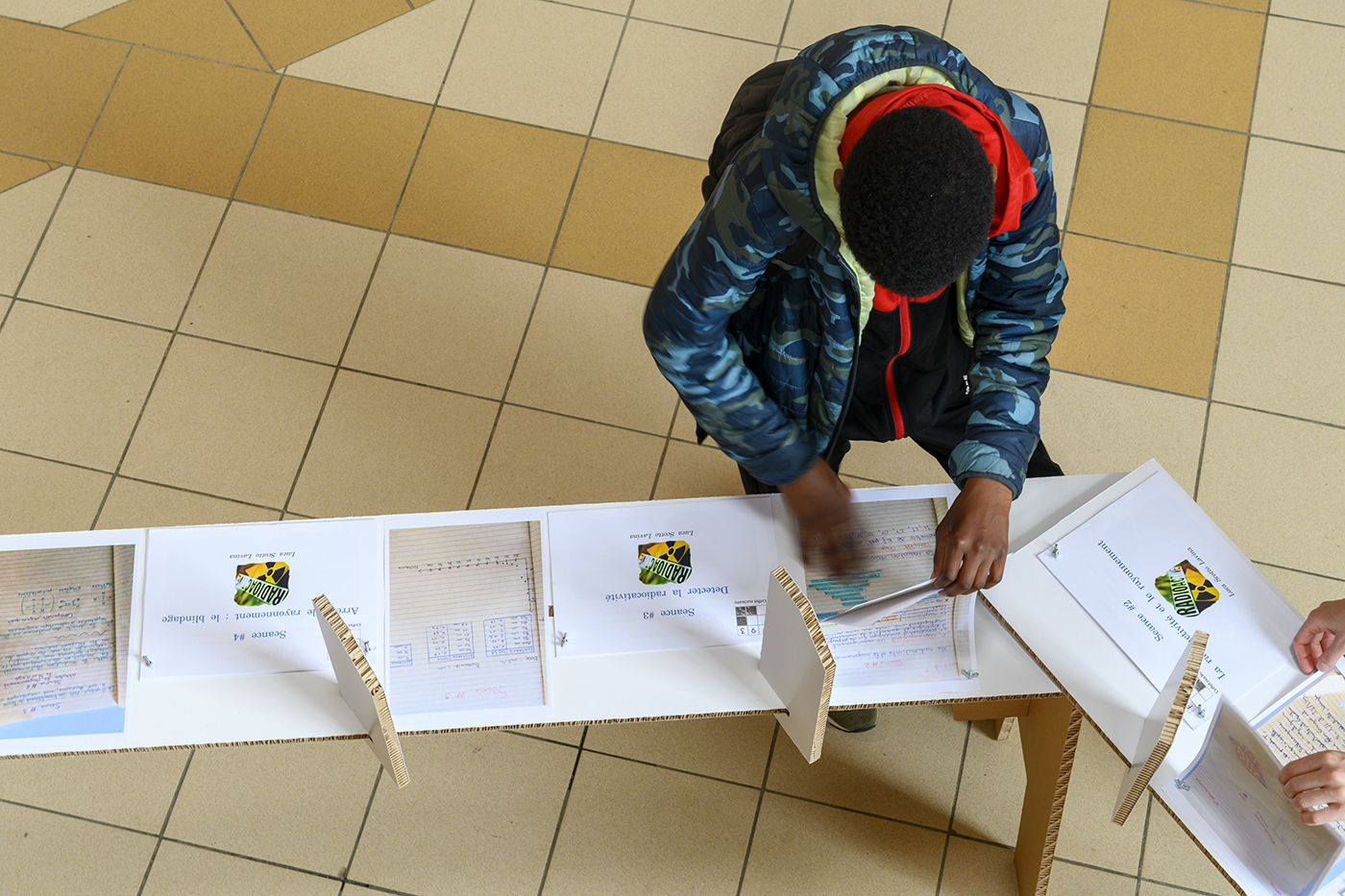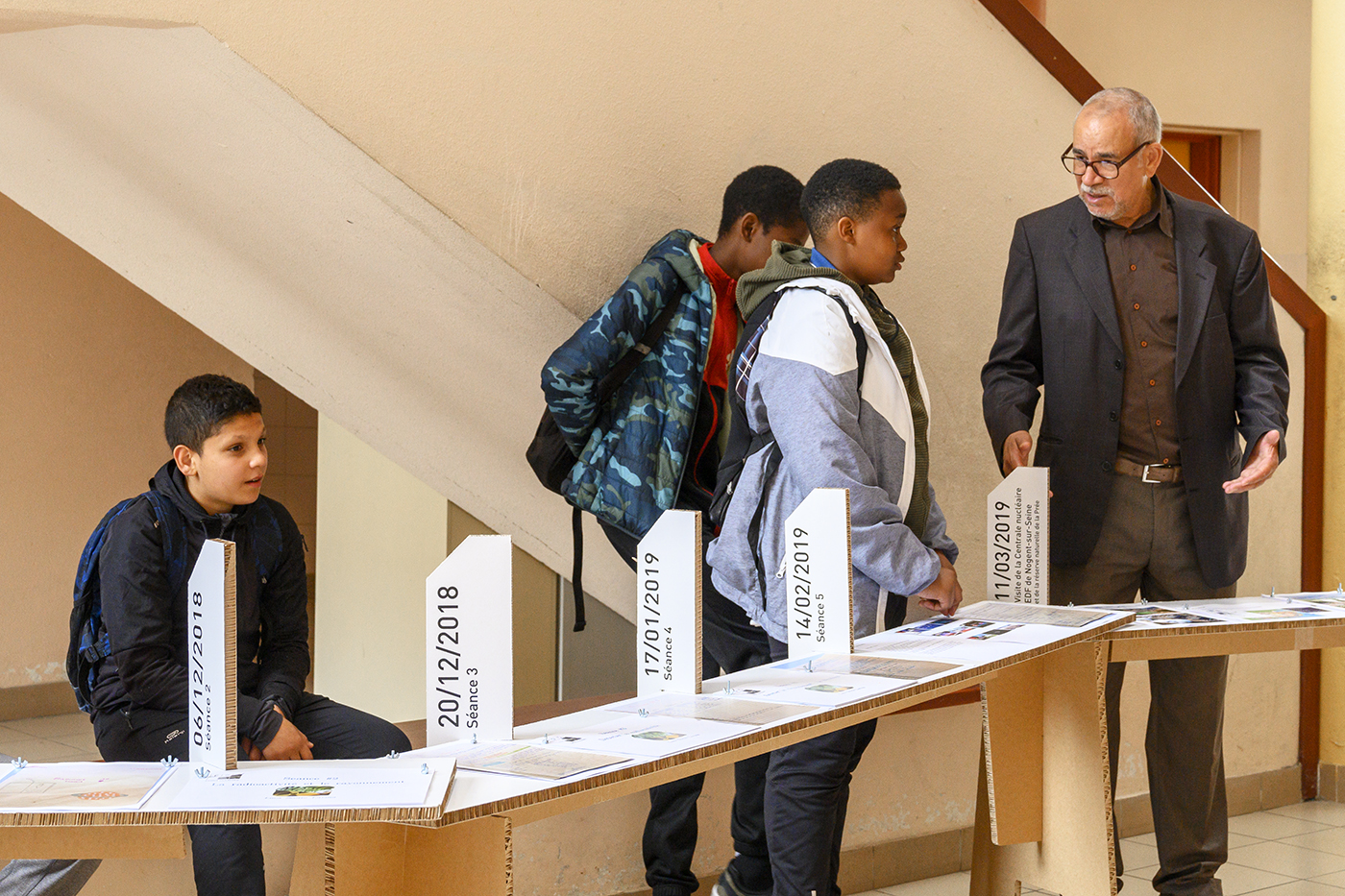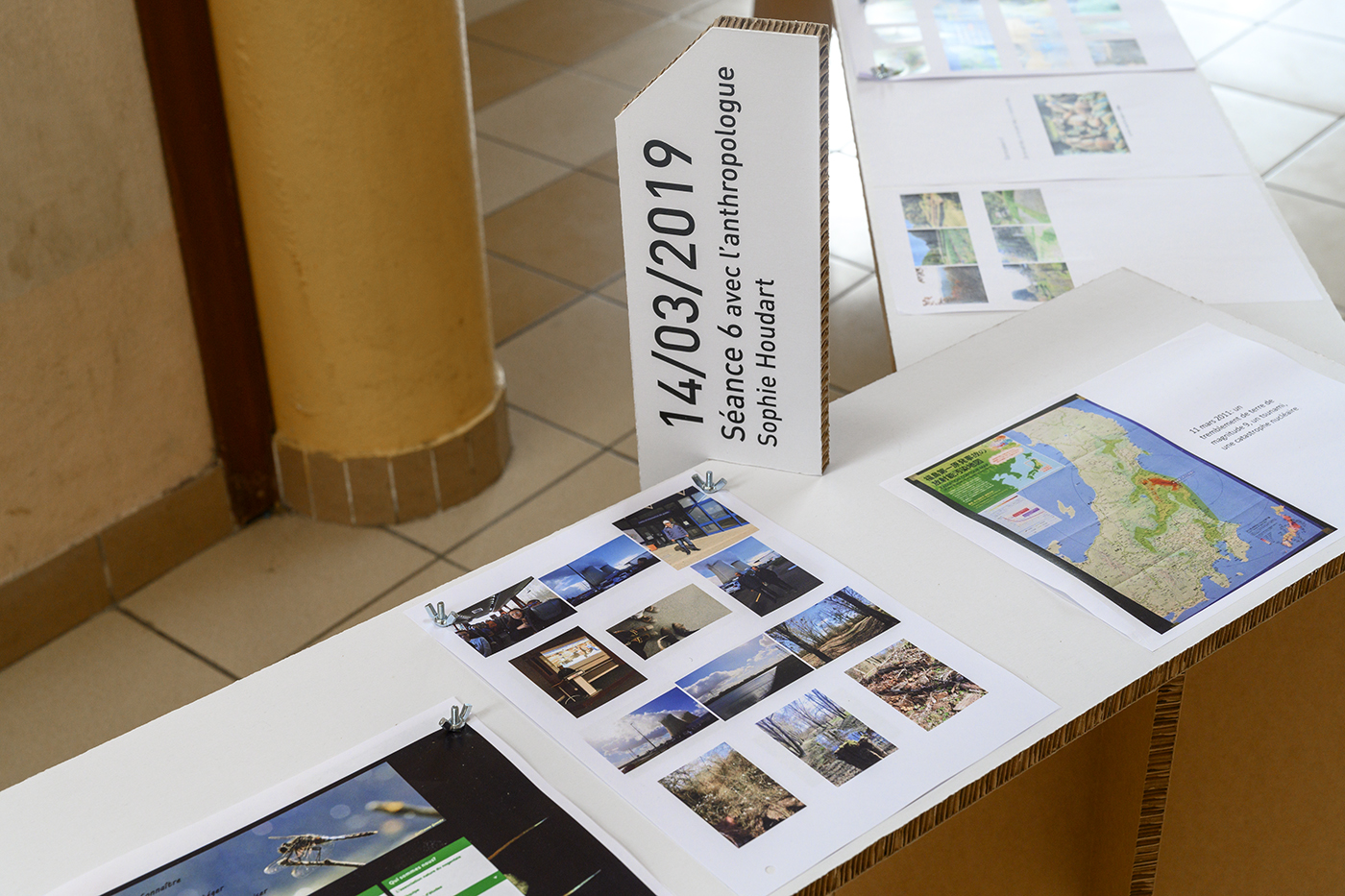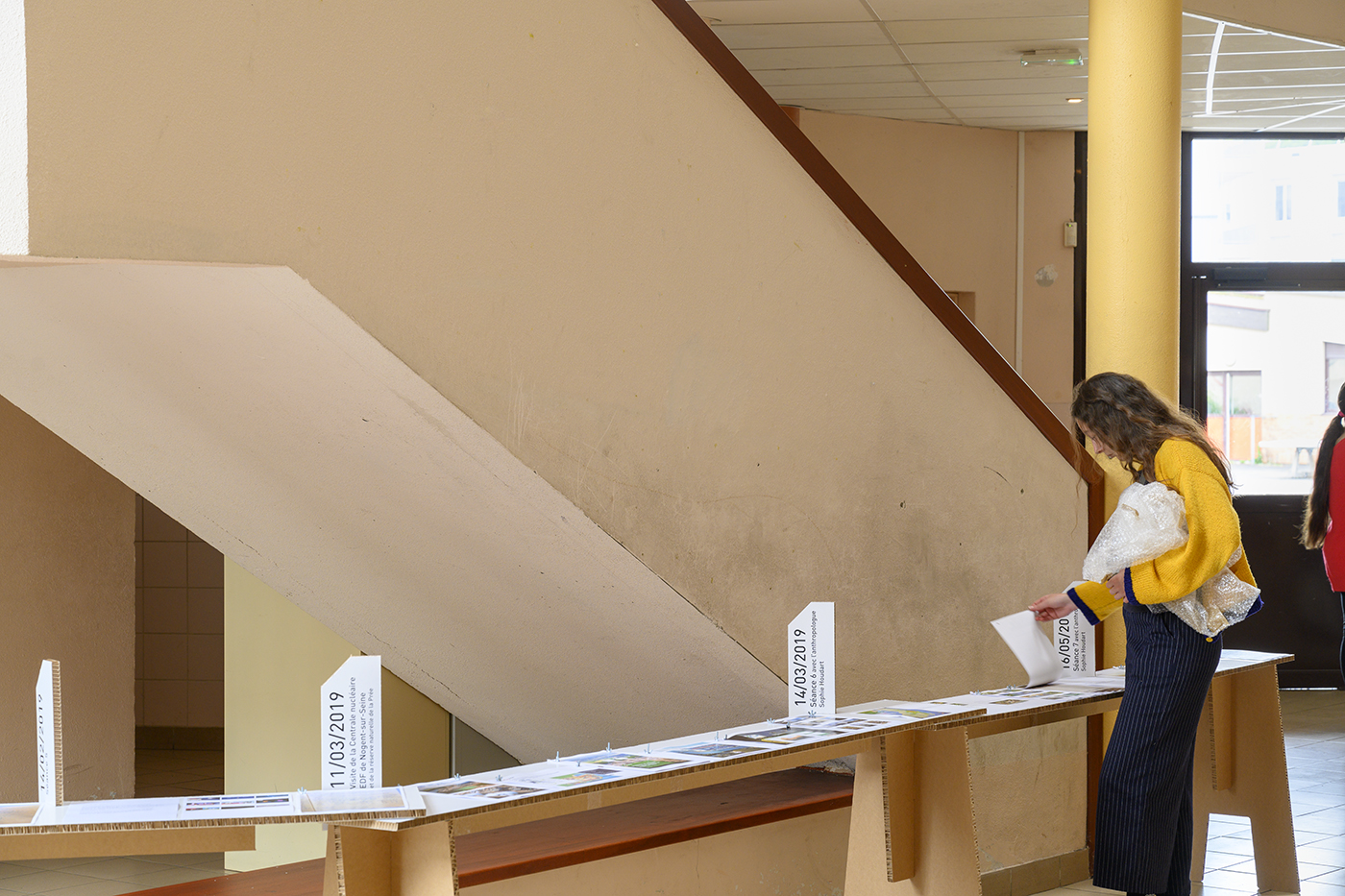The nuclear effect
Since 2009, the Seine-Saint-Denis County Council has been backing “la Culture et l’Art au Collège (CAC)”. This project is based to a large extent on the presence in class for several weeks (40 hours) of an artist or scientist whose mission is to engage the students in a process of research and creation.
Contributors: physicists
Objectives:
Understanding radioactivity and radiation – on the one hand, by studying its formation and natural sources, a progression that will take the students from the structure of atoms to classification via the discovery of radon; and on the other hand, learning about what are known as “artificial” sources with the example of the nuclear industry. During this phase, the students will also address the controversies raised by this industry.
Workshops:
Atomic Number 86
In class, the course begins with a formal approach to understand the “atom – nucleus – radiation” trio through its physical principles, discoverers, and measurement methods. The students then learn about radon, an odourless gas that is nevertheless highly radioactive and present in high doses in the city. The students set off to find it using Geiger counters, measuring it and taking samples from the atmosphere, water, homes and their school.
Pierre and Marie
The distinction can now be made between natural and artificial radioactivity (discovered by the Curies in 1934). The contributor explains the main fields that have benefited from this discovery: medical imaging, energy and weapons. At this stage, the class addresses the issue of recycling nuclear waste, particularly waste from nuclear power plants, and how these plants function is also explained. This stage concludes with a session about radiation protection.
Nuclear Temptation
During the final phase, the project addresses the infamous case of the Fukushima power plant in Japan. After retracing the various stages of the disaster and its consequences since 2011, the contributor and students think about living conditions in contaminated areas. The class then starts a discussion with Japanese students the same age as they are: “what is our generation’s attitude to civil nuclear power?”
Photos : Pierre Antoine
Scénographie : Elodie Descoubes




